

Anthony Crawford
1990 Lamborghini Countach review
5 Days Ago

Design Contributor
In this series of articles, we are going to examine the faux grilles, air intakes, scoops, inlets, exhausts, skid plates, and decorative elements pretending to be something they are not.
The goal isn’t to take pot shots at automotive designers, as in most cases their “cheats” make the car look more stylish. Instead, we want to reveal the functional and decorative elements of a car’s bodywork as the latter become more common.
This week, we’re going to examine the BMW M4 Competition.
BMW officially revealed the brand new M3 Sedan (G80) and M4 Coupe (G82) last week and even though everyone appreciated their technical specifications, there was a lot of controversy around BMW’s new styling direction.
We had already seen the huge grille in leaked photos of pre-production prototypes and accurate renderings, however it is still a topic that divides the BMW community.
Setting aside any subjective views, we decided to make a Design Expose article in order to see what is real and what is fake on the M-specific aero kit that will be shared among the M3 Sedan, M3 Touring, M4 Coupe, and M4 Convertible.
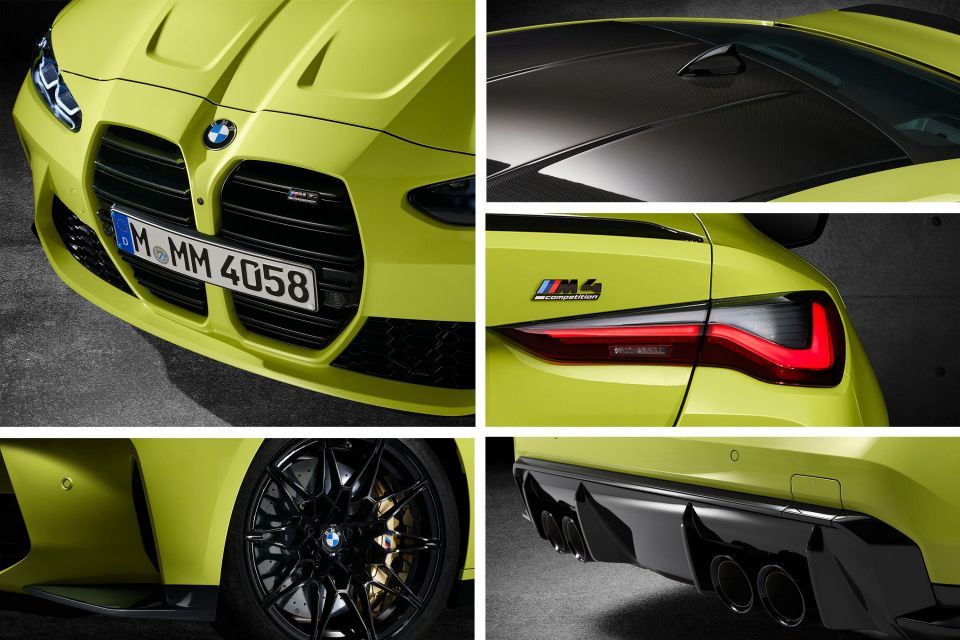
Starting with a quick recap of the performance credentials, the new M3/M4 are fitted with a twin-turbo inline-six 3.0-litre engine. In base spec, the engine produces 353kW of power and 550Nm of torque, with a six-speed manual transmission sending power to the rear wheels.
In the more powerful Competition, it produces 375kW of power and 650Nm of torque, and is exclusively mated with the eight-speed automatic M Steptronic sending power either to the rear wheels or to all four wheels with the help of the rear-biased M xDrive all-wheel-drive system.
There’s also an Active M Differential on the rear axle, Adaptive M suspension with electronically-controlled dampers, Dynamic Stability Control, M Traction Control, variable-ratio steering, and M Compound brakes.
BMW claims that the 0-100km/h acceleration is completed in 4.2 seconds (3.9 seconds for the Competition), the 0-200 km/h in 13.7 seconds (12.5 for the Competition), and top speed is electronically limited to 250km/h or 290km/h with the optional M Driver’s package.
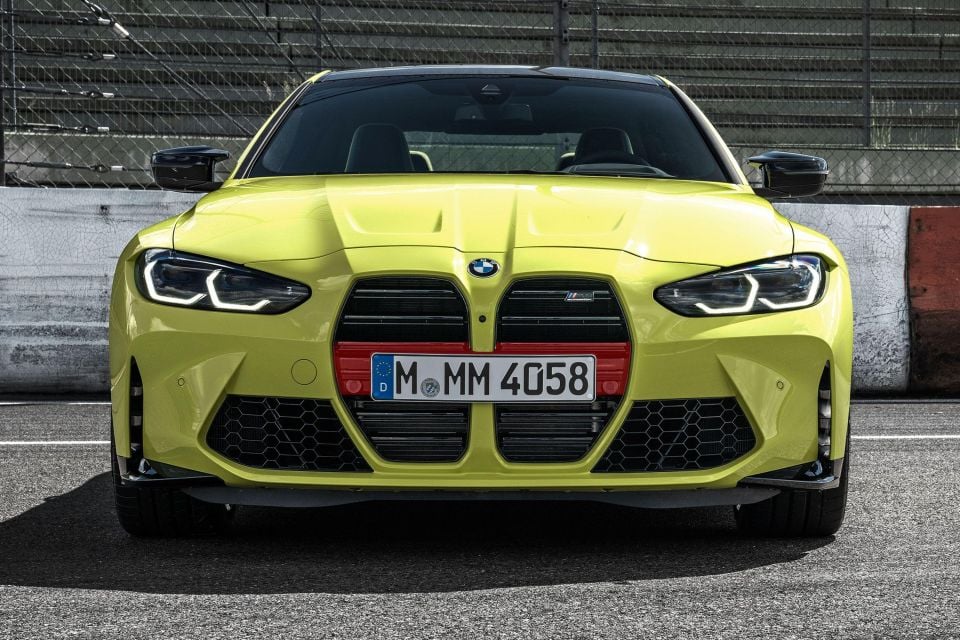
Let’s examine the redesigned bodykit. At the front, the huge kidney grille is the main attraction, covering most of the bumper and guiding the strong dynamic lines on the bonnet that feature two integrated air outlets.
Despite its sheer size, the kidney grille is functional, with only a small part being blocked. The area in the middle (highlighted in red in the picture above), incorporates the energy-absorbing structure, the licence plate holder, and the front parking sensors.
The lower honeycomb grille with the aggressive flanks on each side following the lines of the LED headlights is 100 per cent functional with no blocked parts. Likewise, the vertical side intakes are functional, helping with brake-cooling and minimising air turbulence on the front wheels.

In profile, the M4 has wider front fenders to cover the wider tracks, with version-specific decorative logos behind the front wheels that look like a continuation of the dynamic line on the lower part of the door. Those parts are there for cosmetic purposes only and do not have actual inlets as their shape might suggest.
There are also sporty side sills matching the front splitter and the rear bumper extensions, a carbon fibre roof, and aerodynamic mirror covers with integrated fins further distinguishing the M4 from the rest of the 4 Series range.
Last but not least, the exclusive multi-spoke wheels finished in black measure 18 inches at the front (275/35 ZR19 tires) and 19 inches at the back (285/30 ZR20 tires) in Competition guise.
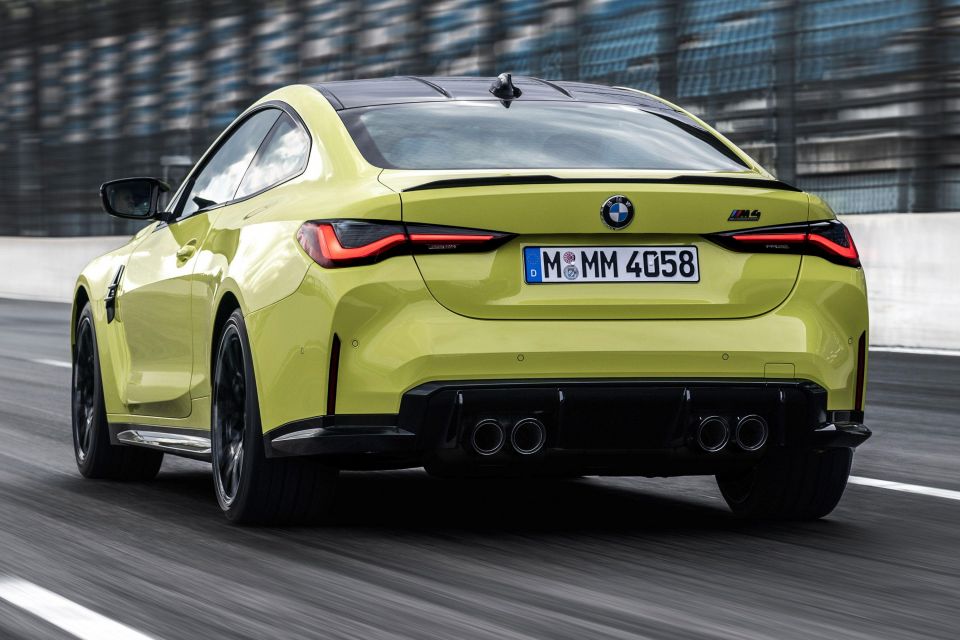
Moving over to the back, we find a discreet lip spoiler lip, and a fully redesigned rear bumper that has a shared design for both the four-door M3 Sedan and the two-door M4 Coupé.
In contrast with the current trend that wants every car to have fake air outlets on its tail, BMW designers took a different approach. A large rear diffuser incorporates quadruple exhaust pipes and is surrounded by the rear apron extending to the lower part of the bumper.
At the same time, two vertically arranged light reflectors continue the theme of the side intakes of the front bumper, while serving a purpose.
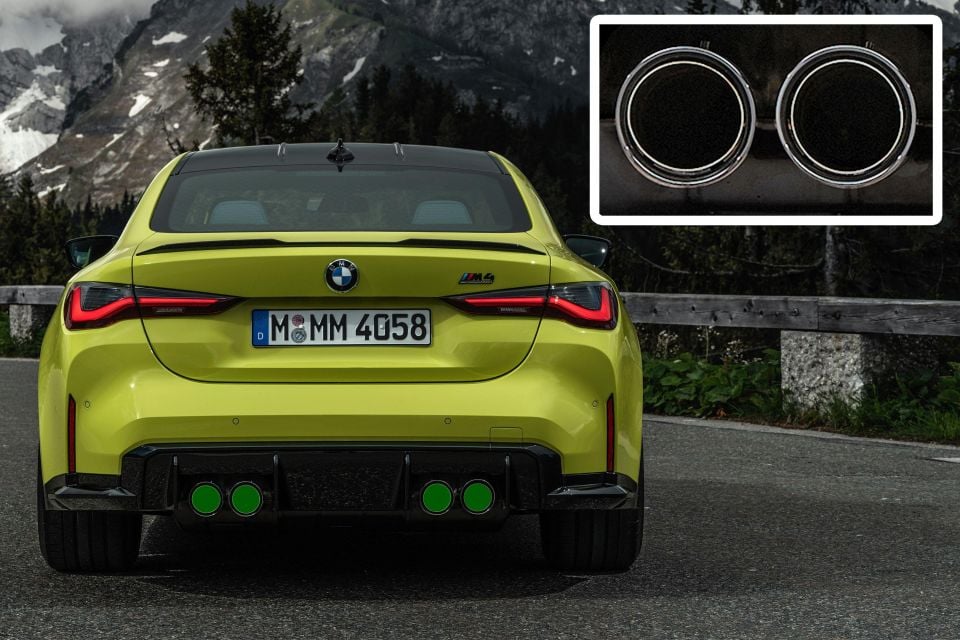
As you can see from the image above, all four tailpipes (finished in chrome on the base model and black chrome on the Competition) are 100 per cent legitimate. They should also sound the part thanks to the electrically-controlled flaps operated from the M Sound Control button on the centre console.
Besides the exhaust that comes standard from the factory, BMW also offers the optional M Performance titanium silencer system and carbon/titanium or titanium tailpipe trim module with ceramic coating and black matte finish.
Those centrally-located quadruple tailpipes (also functional) are combined with a carbon rear diffuser and can be further customised with adhesive foils in different blue, red, and purple shades.

This is just an example of the wide range of M Performance parts designed to improve and further customise the M4 Coupe in terms of aesthetics, aerodynamics, drive, brake and suspension systems.
The colour palette includes the Sao Paulo Yellow, Toronto Red metallic, Isle of Man Green metallic, Alpine White, Sapphire Black metallic, Skyscraper Grey metallic, Brooklyn Grey metallic, Portimao Blue metallic as well more paint shades from BMW Individual. Those can be combined with High-gloss Shadow Line trim, body-coloured details or the pictured M Carbon exterior package.
Inside, you can have either the standard heated (optionally ventilated) M sport bucket seats with electric adjustments, integrated headrests, illuminated M4 logo and Merino leather upholstery, or the optional and more hardcore M Carbon bucket seats (pictured) that look like they came out of the racetrack.
There is also a three-spoke M leather steering wheel with gearshift paddles and configurable M-specific buttons, as well as an M branded gear selector. The cabin can be specified with carbon-fibre, aluminium or open-pore fine wood trim depending on the customer’s preferences, and in many colour combinations.
The vast majority of the materials in the cabin are exactly what they seem to be, like in every high-end BMW model.
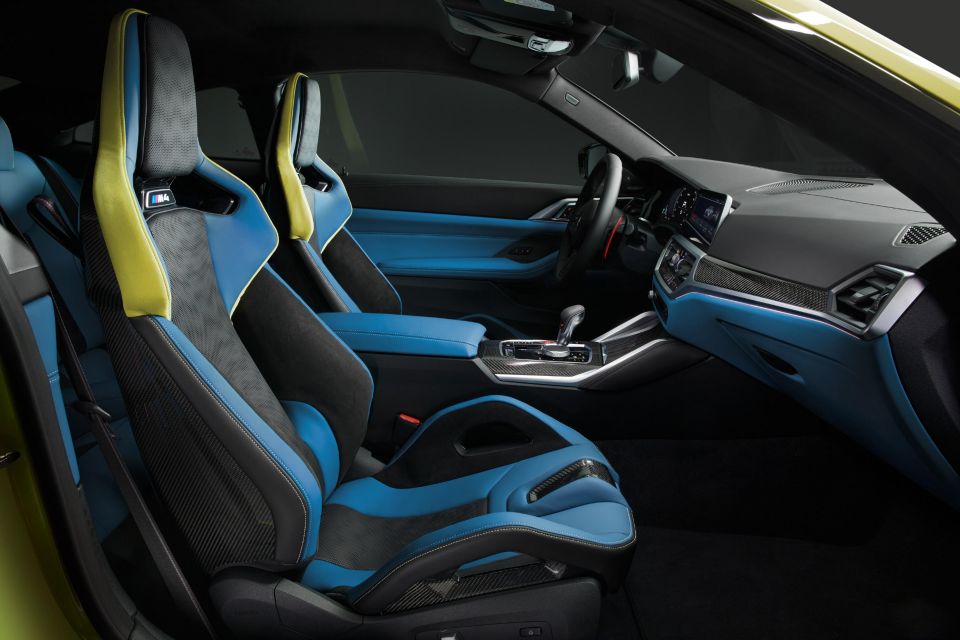
The digital instrument cluster (BMW Live Cockpit Professional) combined with the central touchscreen and the optional BMW Head-Up Display have version-specific M graphics. Furthermore, the M Drive Professional system brings the M Drift Analyser, M Laptimer and M Traction Control that help the driver improve his/her lap times and driving skills.
As for driver assists, the standard equipment includes Park Distance Control, Front Collision Warning, Lane Departure Warning και Speed Limit Info. Optionally you can have the Driving Assistant Professional with Steering and Lane Control Assistant, Active Navigation, Emergency Lane Assistant, Parking Assistant with Reversing Assistant and BMW Drive Recorder.
Where expert car reviews meet expert car buying – CarExpert gives you trusted advice, personalised service and real savings on your next new car.


Anthony Crawford
5 Days Ago


Matt Campbell
4 Days Ago


James Wong
3 Days Ago


Max Davies
2 Days Ago


Josh Nevett
1 Day Ago


Marton Pettendy
16 Hours Ago